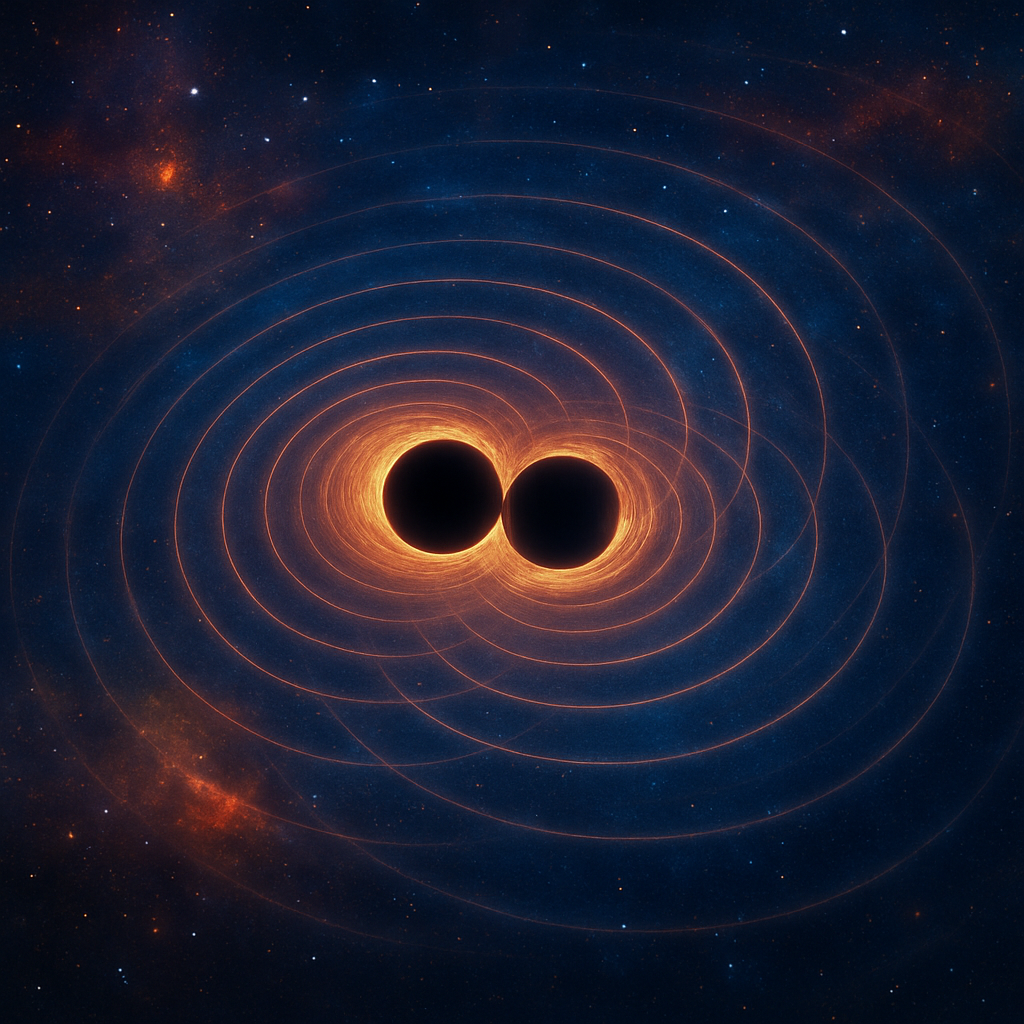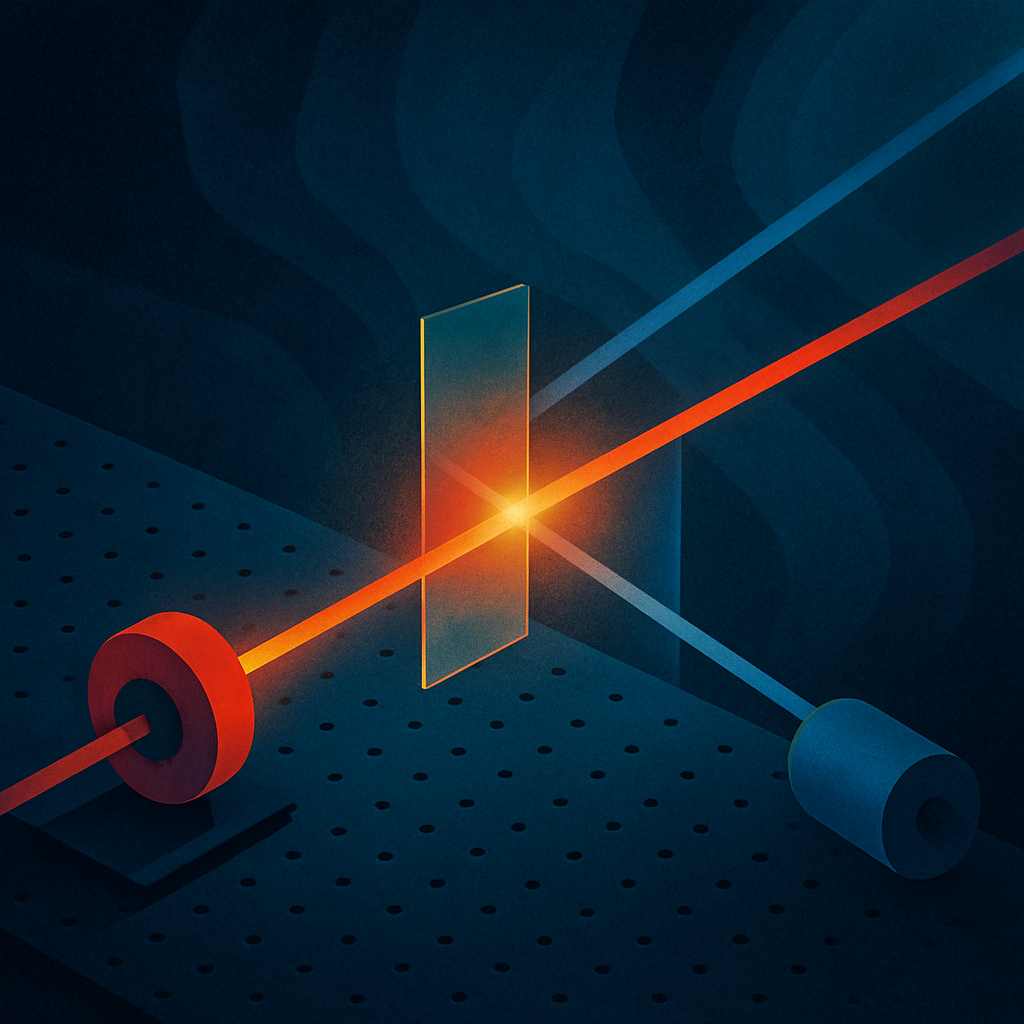
ChatGPT:
Listening to the Universe: Ten Years of Gravitational Waves
A New Kind of Hearing
On September 14, 2015, something extraordinary happened. Scientists detected the universe shaking. Not shaking in a way you could feel underfoot, like an earthquake, but shaking in the very geometry of reality itself. Two black holes had collided more than a billion light-years away, sending ripples through the fabric of space and time. When those ripples finally reached Earth, two enormous detectors — one in Louisiana and one in Washington State — recorded the faintest stretching and squeezing ever measured.
These ripples are called gravitational waves. Predicted by Albert Einstein in 1916, they arise when massive objects accelerate violently, like black holes colliding or neutron stars spiraling together. For a century they remained theoretical, because they are vanishingly weak by the time they reach us. But now, ten years after that first detection, gravitational waves have become one of the most exciting frontiers in science. More than 200 confirmed events have been catalogued, and with every new signal, we learn something fresh about the universe.
What Exactly Are Gravitational Waves?
To picture gravitational waves, imagine spacetime as a vast, flexible sheet. Place a bowling ball on it: the sheet dips, representing how mass curves space. Roll a smaller ball nearby: it spirals around the dip, showing how gravity works. Now imagine shaking that bowling ball violently. The sheet ripples outward. That is, in essence, a gravitational wave — a traveling disturbance in the fabric of spacetime.
Unlike light, which can be absorbed, scattered, or blocked, gravitational waves pass unhindered through matter. That means they carry pristine information from places no telescope can see: the hearts of black hole mergers, or even perhaps the echo of the Big Bang itself. In this way, they offer us not just another tool, but a brand-new sense — as if humanity suddenly gained ears after relying only on eyes for millennia.
How Do We Detect Them?
Catching gravitational waves is an enormous technical challenge. The distortions they cause are smaller than a fraction of the width of a proton. To measure something so tiny, scientists built colossal detectors called interferometers.
Here’s how they work: A laser beam is split into two paths at right angles. Each path runs down a long tunnel — four kilometers in the case of the LIGO detectors in the United States. The beams bounce off mirrors at the ends and return to meet again. If spacetime stretches or squeezes along one arm because of a passing gravitational wave, the returning beams will no longer align perfectly. That misalignment produces a tiny flicker of light, signaling that spacetime itself just rippled.
Over the past decade, three main facilities have joined forces: LIGO in the U.S., VIRGO in Italy, and KAGRA in Japan. Together, they form a global network, which allows scientists to pinpoint where in the sky a wave came from.
A Decade of Discoveries
Since 2015, more than 200 gravitational-wave events have been recorded. Most involve pairs of black holes merging — collisions so violent they momentarily outshine all the stars in the universe combined, though only in gravitational waves. Others involve neutron stars, the ultra-dense remnants of exploded suns. In 2017, one such collision was observed both in gravitational waves and light, giving astronomers a multimessenger view that explained where heavy elements like gold and platinum come from.
Each detection is like adding another instrument to an orchestra. At first we heard only the loudest drums: huge black holes. Now, as sensitivity improves, we are catching subtler notes: smaller black holes, neutron star pairs, and mixed systems. This variety helps physicists test Einstein’s theory under extreme conditions. So far, general relativity has passed every test — but tiny deviations could hint at new physics, perhaps even a bridge to quantum gravity.
Standing on the Shoulders of Giants
The story of gravitational waves is not just about technology, but also about intellectual history. Isaac Newton, wandering the courtyards of Cambridge in the 17th century, first described gravity as a universal force acting across space. His equations could predict the motion of planets with stunning accuracy, but they pictured gravity as an invisible tug.
Einstein transformed that picture. In his general theory of relativity, gravity is not a force at all but the warping of spacetime. Planets orbit the sun not because they are pulled, but because they follow curved paths in a deformed geometry. From this framework came the prediction: if masses accelerate, they should send ripples racing through spacetime. For a hundred years, it remained a beautiful but untested idea. The past decade has made it real.
Why the Next Decade Matters
So where do we go from here? The detectors on Earth are constantly being upgraded, pushing down the noise and stretching their reach deeper into the cosmos. Within a decade, they may record thousands of events each year, allowing us to map populations of black holes and neutron stars the way we once mapped galaxies.
Even more exciting are future space-based detectors like LISA (Laser Interferometer Space Antenna), a planned European Space Agency mission that will place three spacecraft millions of kilometers apart in orbit around the Sun. LISA will be sensitive to lower-frequency waves, enabling it to hear the mergers of supermassive black holes, as well as subtle signals from compact binaries in our galaxy. It might even detect a faint hum from the early universe, offering clues about cosmic inflation and the very beginning of time.
The combination of ground and space detectors will transform gravitational-wave science from rare events into a routine form of astronomy — just as telescopes once turned comets and planets into familiar sights.
A New Chapter in Human Curiosity
Gravitational waves remind us of something profound: the universe is not silent. For centuries, astronomy was about light — starlight, radio waves, X-rays. Now we are literally listening to the cosmos, and what we hear is both strange and beautiful.
Every detection carries a message across billions of years: a story of massive stars that lived, died, collapsed, and collided. Some of those stories tell us about the origin of elements in our bodies. Others may eventually reveal the fate of the universe itself.
At its heart, this is a story about curiosity. Newton’s questions about falling apples led to laws of motion. Einstein’s thought experiments about falling elevators led to curved spacetime. Now, with lasers and mirrors stretched across deserts and mountains, we are extending that curiosity to the scale of the universe itself.
Conclusion
Ten years ago, we opened a new sense. Today, we are still learning how to use it. Gravitational waves are not just another discovery; they are the beginning of an entirely new way of knowing. They teach us that the universe is dynamic, restless, and full of hidden drama.
In another ten years, perhaps we will not only hear the thunder of colliding black holes but also the whisper of the Big Bang. And when we do, we will once again expand the horizon of human knowledge — not just seeing the universe, but truly listening to it.

